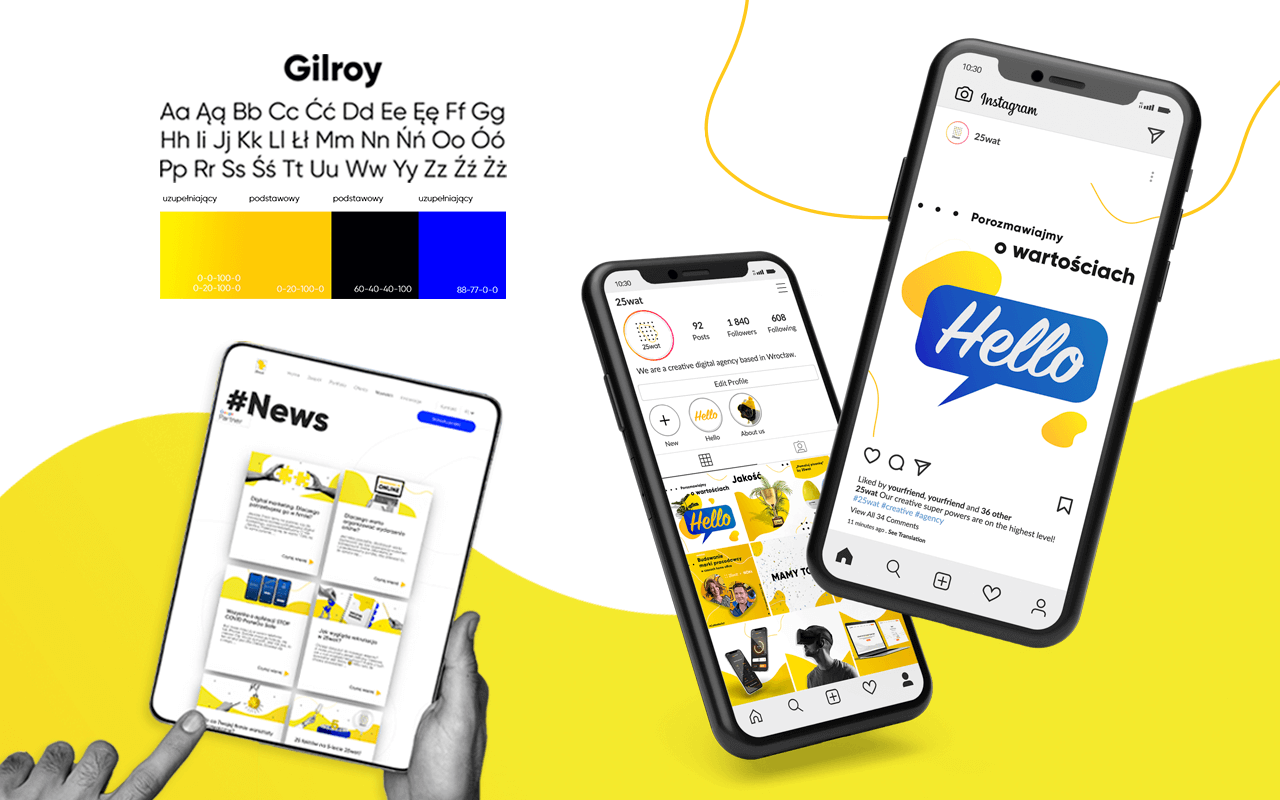5 graphic designer’s tips on creating a key visual
To stand out, be noticed and remembered by customers. This is what every brand, manufacturer, service provider wants. And designers make this wish come true. How? Through key visual. Do you want to learn how to create it? Do you want to check if your company’s key visual matches good design practices? Read the following advice from Gracjan Majchrzak — Digital Graphic Designer at the 25wat agency.
Key visual is a graphic theme that appears on all advertising materials and communication media of a brand or its product, service, event. It is to distinguish the company from the competition, and at the same time convey its main values and evoke appropriate emotions in a specific group of recipients. It is to be coherent, characteristic, unique and — as Gracjan Majchrzak points out — developmental:
“Key visual is to be designed for long-term use. Even if it is only to be used to promote a brand in digital, it should have development potential. To prove themselves in the future, for example, in outdoor advertising.”

25wat key visual after the rebranding
How to create a compelling key visual?
5 tips by a digital graphic designer from the 25wat agency
1. Get to know the brand
If we compare designing key visual to building a house, this stage is like preparing the ground for foundations. It decides on further steps of work. It defines the form, style, and character of the future home. And so, if you want to create key visual for a company, you need to start with getting to know its mission, values, offer, and audience. You need to find out what it wants to achieve, what its business goal. To gain this knowledge, you can conduct a strategic workshop or create a brief with the client. A strategic workshop is an effective way to get to know the brand. It allows, among others to recognize the distinguishing features of the brand and its immediate communication needs.
Brief performs similar functions — it is also a source of information about the company, which you obtain thanks to precise and comprehensive questions.
Necessary: Tell the client that his involvement at this stage is crucial to the project. Creating KV is a team sport.
2. Analyze the information obtained
Do you have information from the brief or conclusions from the workshops? It’s time to analyze them, draw conclusions, listen to the brand’s expectations, and consider all the data obtained. Then get to know, among others, company logotype, which is often a strong hint regarding colors, typography, and shapes of the key visual project.
Necessary: Even if you have a head full of ideas, focus on the specific needs of the project — on particular solutions and materials that should be adapted to the primary method of brand communication with the audience. Is its strength to be the hit communication in social media? Do not create outdoor projects for the brand, but show digital graphics.
3. Create a board of inspiration (moodboard)
Before the best solutions crystallize, create a place to write down creative ideas and glare. At 25wat, we call them the board of inspiration and the stage of work — ideation, i.e., a game of imagination. We write down the first sketches, color palettes, and style references based on experience or benchmark research on the board.
Necessary: Having an inspiration board, you can show the client the first effects of your work, indicate an aesthetic design, and ask for approval of the concept or suggestions and comments.
Necessary: Having an inspiration board, you can show the client the first effects of your work, indicate the aesthetic direction of the project, and helps you get feedback on the concept, suggestions, comments.
4. Get team feedback (if possible)
When you have such an opportunity and the rules of cooperation with the client, show the project to other people from the agency, e.g., social media specialists. Such a test presentation will help to check whether the project complies with the brief assumptions.
Necessary: People strategically involved in the project may have valuable comments and thoughts about the aesthetic direction. Their observations may inspire you to further visualizations.
5. Get ready to present your idea
When showing the created key visual, remember that a good presentation includes the final graphic designs and the arguments from which such and not other design decisions result. It is worth clearly explaining to the client why you’ve used specific typography or color.
Necessary: Don’t be afraid to act as an expert.
At 25wat, we carry out various projects related to visual identification. You can see them on Behance. Do you want to create key visuals for your company or a new product? Please do not hesitate to contact us.

